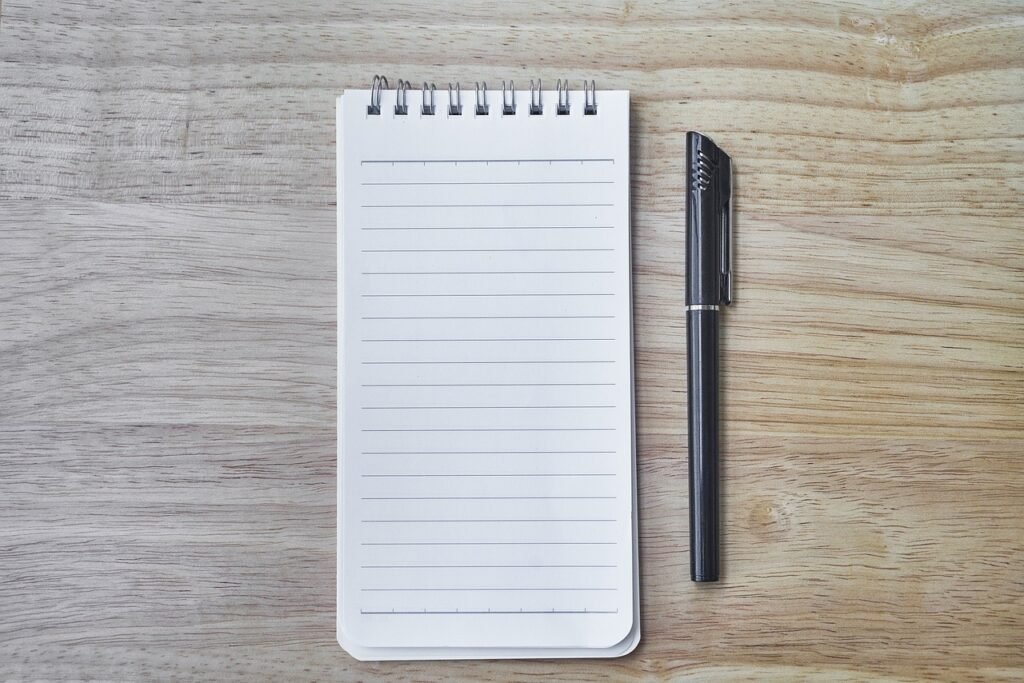
Are you looking to cultivate a deeper sense of mindfulness in your daily life? One powerful tool to help you achieve this is through mindfulness journaling. Mindfulness journaling involves the practice of writing down your thoughts, feelings, and experiences with a sense of awareness and presence. In this blog post, we will explore how you can begin your mindfulness journaling journey, the different methods that exist, and how you can incorporate this practice into your daily routine.
Understanding Mindfulness Journaling
Mindfulness journaling intertwines the art of journaling with the practice of mindfulness, creating a unique approach towards introspection and emotional clarity. This method encourages individuals to engage fully with the present moment, acknowledging thoughts, feelings, and sensations without passing judgment. By directing attention to the act of writing, participants can explore their inner world, uncovering patterns of thought and emotional responses that might otherwise go unnoticed. This practice is not only about recording daily events but also about delving into the nuances of personal experiences, shining a light on subconscious beliefs and behaviors. Engaging in mindfulness journaling fosters a deepened self-awareness, offering insights into one’s own mental and emotional processes. Through this reflective practice, individuals can identify areas of their lives that may benefit from change or acceptance, empowering them to make more mindful decisions. Additionally, mindfulness journaling serves as a tool for stress reduction, providing a safe space for emotional release and fostering a state of mental clarity. As practitioners regularly commit thoughts and feelings to paper, they develop a greater understanding of themselves, enhancing their emotional intelligence and contributing to a sense of overall well-being.
Setting Up Your Mindfulness Journal
Choosing the right journal is the first step in your mindfulness journaling journey. Opt for one that resonates with you personally; it could be a minimalist notebook that allows your thoughts to take center stage or a visually appealing diary that motivates you to write regularly. After selecting your journal, establish a daily journaling routine that aligns with your lifestyle. This might mean carving out time in the early hours of the morning when the world is still quiet, or unwinding in the evening with your journal as a means to reflect on the day.
Creating an environment conducive to mindfulness is crucial. Find a tranquil spot where you can sit comfortably without interruptions. This could be a cozy corner of your home filled with cushions and soft lighting or a serene outdoor space where you can connect with nature. Equip this space with everything you need, such as your journal, pens, and perhaps a timer if you wish to incorporate timed writing sessions. The goal is to make this space inviting and inspiring, encouraging you to look forward to your journaling time as a peaceful retreat from the hustle and bustle of daily life. By thoughtfully setting up your mindfulness journal and dedicated space, you lay the foundation for a meaningful practice that nurtures self-awareness and personal growth.
Basic Techniques to Get Started
To embark on your mindfulness journaling journey, a good starting point is to ground yourself in the present before you begin to write. This can be achieved by focusing on your breathing, allowing each inhale and exhale to bring you closer to the present moment. This simple act helps prepare your mind for a state of awareness and reflection. Another foundational technique is gratitude journaling. Each day, dedicate a part of your journal to listing three things you’re thankful for. This practice not only cultivates a positive outlook but also trains your mind to recognize and appreciate the abundance in your life. Engaging in this routine regularly can significantly shift your perspective, fostering a deeper appreciation for the seemingly mundane aspects of daily life. Additionally, experimenting with stream of consciousness writing can be a valuable tool. Allow your thoughts and feelings to flow onto the page without censoring or judging them. This raw form of expression can lead to profound insights into your internal state, providing clarity and understanding of your emotions and thought patterns. These basic techniques serve as the foundation for a fruitful mindfulness journaling practice, enabling you to explore your inner landscape with curiosity and openness.
Mindfulness Prompts to Deepen Your Practice
To elevate your mindfulness journaling, incorporating thoughtful prompts can be transformative. These prompts are designed to probe deeper into your consciousness, encouraging a more profound engagement with your present emotions and thoughts. Here are some engaging prompts to get you started:
– Reflect on a moment today that made you smile. Why did it have that effect?
– Consider a challenge you faced today. What did it teach you about yourself?
– Describe a sensation you experienced today in great detail. How did it affect your mood or thoughts?
– Think about a conversation that stuck with you. What emotions did it stir, and why?
– Explore your reaction to a piece of news or a social media post. What does this reveal about your values and beliefs?
– Imagine your ideal day. What elements make it perfect, and how can you incorporate those into your daily life?
These prompts not only guide you to contemplate your immediate experiences but also encourage you to connect with your deeper self, exploring your reactions, aspirations, and emotional undertones. By responding to these prompts, you gradually build a rich tapestry of self-awareness and mindfulness, each entry a step closer to understanding the complex layers of your emotions and thoughts. This practice, over time, cultivates a more nuanced and empathetic relationship with yourself, fostering growth and self-compassion.
Incorporating Mindfulness Exercises Into Your Journaling
Enhancing your mindfulness journaling practice with specific mindfulness exercises can lead to greater emotional and mental clarity. Before diving into your writing, consider engaging in a brief mindfulness meditation. Sit quietly, focusing on the rhythm of your breath, and allow yourself to become fully present in the moment. This preparatory step can center your thoughts and make your journaling more introspective. Additionally, mindful observation exercises can be integrated. Take a moment to observe your surroundings or focus on a particular object, noting every detail, color, texture, and the feelings it evokes. Bring these observations into your journal, describing them with rich detail and reflecting on the mindfulness practice it encouraged. Another exercise involves mindful listening during your day. Pay attention to the sounds around you, whether it’s the bustling of the city, the chatter of people, or the tranquility of nature. Write about this experience, exploring how it affected your mood and thoughts. These mindfulness exercises, when combined with journaling, can deepen your awareness and enhance the quality of your reflections, creating a more fulfilling and insightful practice.
Building a Consistent Mindfulness Journaling Routine
Cultivating a regular mindfulness journaling habit is crucial for deepening your practice and enhancing its benefits. To do this effectively, choose a specific time of day for your journaling that aligns with your natural rhythms and daily commitments. This could be a serene morning period before the day’s activities begin, a quiet midday pause, or a reflective evening time. The key is to integrate this practice seamlessly into your routine, making it as integral as your morning coffee or bedtime ritual. By dedicating a designated time to journal, you signal to yourself that this practice is important, deserving of your time and attention. It’s also helpful to set gentle reminders or create cues that prompt you to journal, such as placing your journal in a visible spot where you’re most likely to engage with it. Remember, the aim is not the length of time spent journaling but the regularity and intention behind the practice. Consistency, even in small doses, lays the foundation for a transformative journey towards mindfulness and self-discovery.
Exploring Advanced Mindfulness Journaling Techniques
For those ready to elevate their mindfulness journaling practice, delving into advanced techniques can enrich the experience, offering new depths of insight and self-awareness. One such method involves integrating visual elements into your journaling. Sketching or doodling your emotions and thoughts can provide a different perspective, allowing you to express what words cannot fully capture. This visual approach encourages creativity and can unveil subconscious feelings.
Another advanced technique is the practice of reflective questioning. After writing about your day or a specific event, challenge yourself with questions like, “How could I have approached this differently?” or “What can I learn from this experience?” This method prompts a deeper analysis of your actions and thoughts, fostering personal growth and mindfulness in decision-making.
Exploring letter writing within your journal is also a powerful technique. Address letters to your past or future self, expressing forgiveness, gratitude, or hope. This emotional exercise can be incredibly therapeutic, facilitating healing and a deeper connection with oneself.
Lastly, incorporating mindfulness-based cognitive exercises can significantly enhance your journaling. For example, after noting an emotional experience, identify the thoughts that led to that emotion and question their validity. This approach helps in recognizing and altering negative thought patterns, contributing to improved mental well-being.
By embracing these advanced techniques, your mindfulness journaling practice can transform into a more profound and impactful journey of self-exploration and personal evolution.
